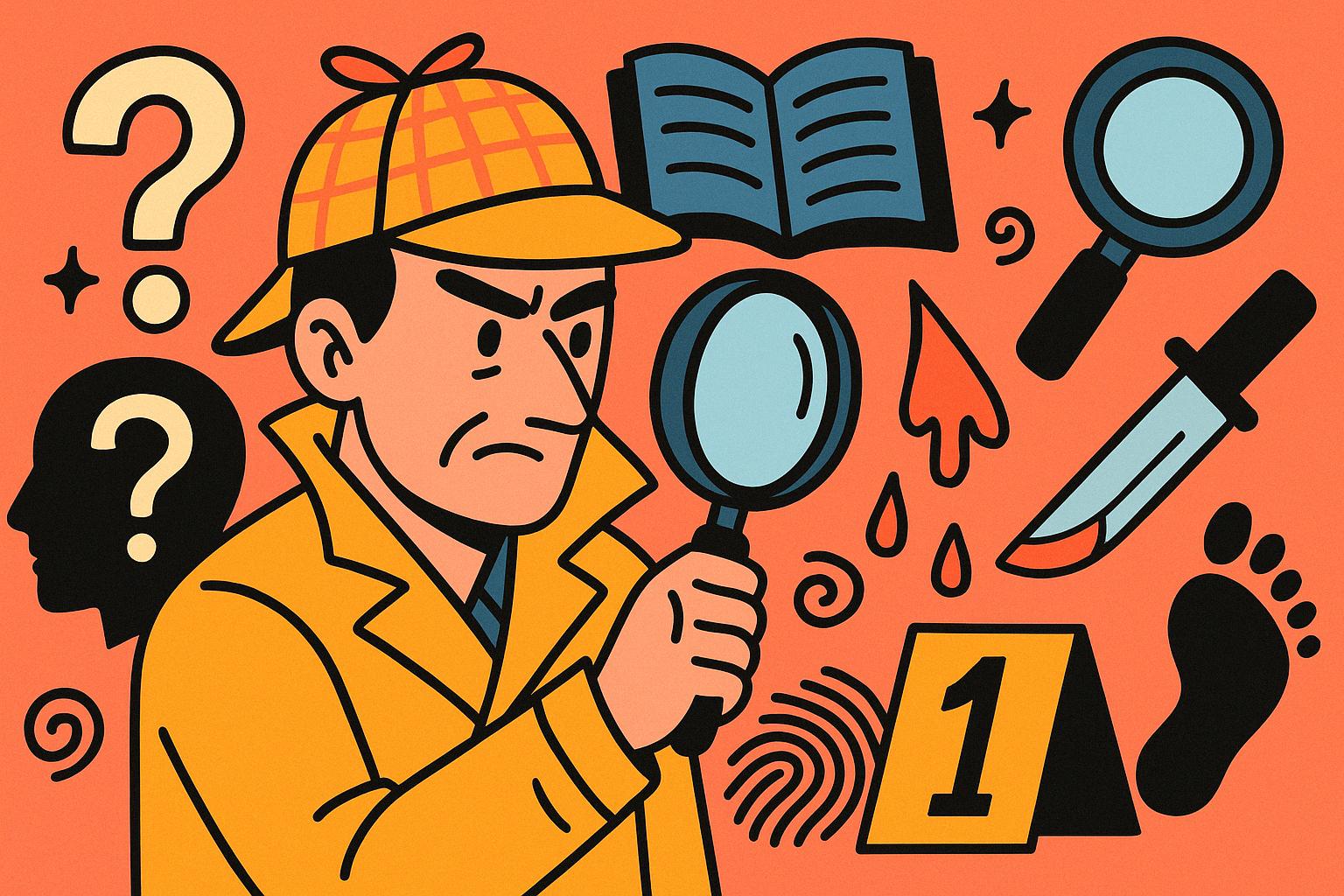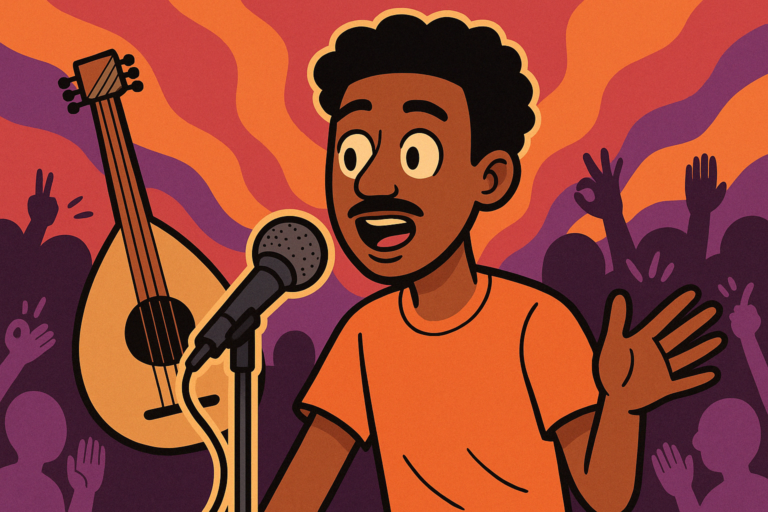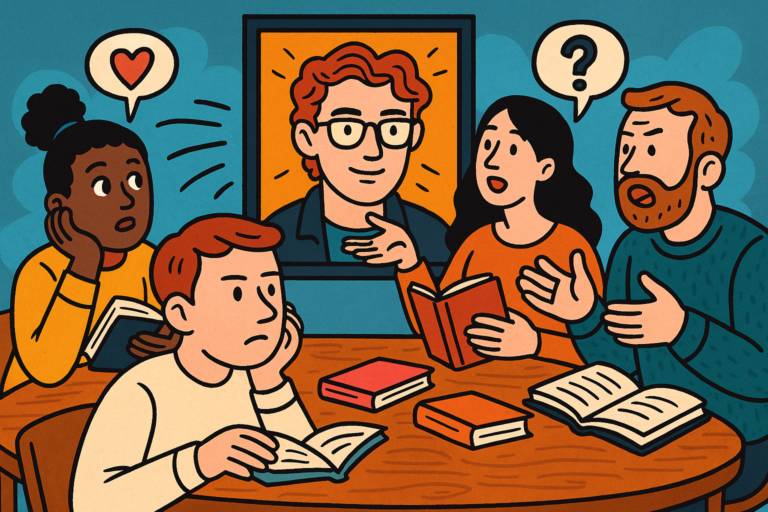What Makes The Mystery Genre So Intriguing

Okay, so here’s the thing: mystery never really goes out of style. Whether it’s Murder, She Wrote, Gone Girl, or that Reddit thread you couldn’t stop scrolling through at 2 a.m., the genre keeps pulling us in.
But what makes it stick, especially for those of us who read or analyze this stuff for a living?
I think it comes down to how mystery handles information—and the lack of it. It’s not just about whodunit; it’s about how the story controls what we know and when we know it. That tension between “too little” and “just enough” is basically dopamine for the narrative brain.
And as I dug deeper, I realized: this genre isn’t just engaging—it’s engineered to exploit the way we think, feel, and process stories. It’s a slow-burn intellectual game and a psychological thrill ride rolled into one. Let’s unpack how that works.
The Mechanics Behind the Mystery
Let’s talk structure—because if there’s one thing the mystery genre nails, it’s the blueprint. And honestly, that’s where a lot of its power lives.
Most people (even seasoned readers) think of mystery as plot-driven. But what fascinates me is how the plot is built. The mystery genre doesn’t just tell you a story—it plays with your cognitive processes using deliberate narrative architecture.
The Enigma–Discovery–Solution Arc
This isn’t just the typical three-act structure. It’s a model that hinges on managing ignorance, which is a very different beast than simply revealing twists. From Poe’s C. Auguste Dupin to Gillian Flynn’s Amy Dunne, we’re not watching events unfold—we’re watching a puzzle slowly rearrange itself until a picture emerges.
Tzvetan Todorov broke this down pretty neatly: in a classic mystery, there are two stories happening—the story of the crime and the story of the investigation. And the fun is in the narrative tension between the two. We’re always behind, trying to reconstruct one from the clues in the other.
And it’s not just about withholding—it’s about timing.
Narrative Time and Controlled Revelation
Mystery thrives on how it manipulates time. Think about how frequently we see analepsis (flashbacks) used as a device not just for exposition but for re-contextualization. The reveal in The Girl with the Dragon Tattoo works because it feeds us flashbacks that seem like background, but actually reframe the entire present-day narrative.
Meanwhile, prolepsis (hints at what’s to come) builds that low-key dread or curiosity. In Sharp Objects, Gillian Flynn drops enough thematic breadcrumbs—razor blades, secrecy, mother-daughter tension—that by the time the ending hits, it’s not just shocking; it feels inevitable in hindsight.
Mysteries almost always rely on disrupted chronology to shape perception. As readers, we’re forced to hold two timelines in our head: what happened, and what the narrator is allowing us to see.
Focalization and the Art of Perspective
This one’s big. Who tells the story in a mystery matters more than in most genres. It’s not just about narrative voice—it’s about focalization, or who “sees” the action.
Take The Secret History by Donna Tartt. The narrator, Richard, isn’t just unreliable—he’s selectively naive. He filters the story through admiration and guilt, and it’s only through that lens that we piece together the murder and the rot underneath all that classical beauty.
Same with Gone Girl, where alternating POVs (Nick vs. Amy) flip our sympathies back and forth like a tennis match. That shifting focalization isn’t just a stylistic choice—it’s a narrative weapon. We’re constantly being reoriented.
And let’s not forget metafictional mysteries like House of Leaves, which don’t just play with perspective—they make the act of reading itself part of the puzzle. You’re not just watching a character solve something—you are the character, whether you like it or not.
Unreliable Narrators = Controlled Chaos
Experts love to argue whether the unreliable narrator is overused. But in mysteries, it’s not a gimmick—it’s essential. It’s a way of encoding the mystery into the act of narration itself. In The Murder of Roger Ackroyd, Agatha Christie didn’t just give us a twist ending—she redefined the ethics of storytelling. The narrator lied. And somehow, we still felt fair-played.
This kind of narrative trickery forces the reader to question not only the facts, but the medium itself. It transforms passive reading into active decoding. And that’s what mystery is really about—turning the reader into a detective.
So yeah, mystery isn’t just plot—it’s design. And when you start looking at how meticulously that design is crafted, you see why it’s not just entertaining… it’s kind of genius.
Why is Mystery Intriguing?
So let’s zoom in on something we all kind of feel when we’re reading or watching a mystery: that weird little thrill, that itch in your brain when you know something’s off but you’re not sure what. That’s not just clever writing at work—it’s your brain doing cartwheels, reacting to the genre’s very specific psychological tricks.
Here’s a deep dive into why mystery affects us so powerfully on a cognitive and emotional level.
1. Curiosity as a Cognitive Drive
Let’s start with the big one: curiosity.
At a basic neurological level, the brain treats unanswered questions like unresolved tasks. You’ve probably heard of the Zeigarnik effect, right?
It’s the idea that we remember incomplete experiences better than completed ones.
When a story sets up a question—“Who killed her?”, “Why did he lie?”, “What’s really going on?”—your brain flags it as unfinished business. And it wants resolution.
Mystery stories dangle these questions like narrative catnip.
And because they rarely give you the answer upfront, your brain kicks into gear. The mesolimbic dopamine system (yes, we’re going full science here) gets involved, rewarding you for chasing the answer—even if you’re nowhere close to solving it.
So that “can’t-put-it-down” feeling?
That’s your reward system buzzing every time a new clue drops or a new red herring appears.
2. Pattern Recognition
Humans are hardwired to look for patterns. It’s why we see shapes in clouds or faces in electrical outlets. And the mystery genre weaponizes that beautifully.
We’re constantly trying to decode stories: “Is this detail a clue or just filler?” “Does this person’s behavior mean something?” “Why was that camera lingering on the knife?”
This taps into a satisfying part of cognition—the ‘aha!’ moment when patterns click into place.
Think of how satisfying it was to realize the significance of the twist in The Sixth Sense, or how Knives Out drops a key detail in plain sight and you only “see” it on rewatch.
In a way, mystery gives us something most genres don’t: the chance to play. We’re not just spectators; we’re participants, solving alongside the characters.
3. Suspense vs. Surprise
Mysteries are a masterclass in balancing suspense and surprise—and understanding how they differ is key.
Suspense is when we know something is going to happen, but not when or how. It builds anticipation. Surprise, on the other hand, is sudden and unanticipated. And mystery leans hard into both, often flipping between them for maximum emotional effect.
Alfred Hitchcock explained this beautifully with his “bomb under the table” analogy: suspense is when we know there’s a bomb and the characters don’t. Mystery often adds a third twist—we don’t even know the bomb exists until it goes off, and then we get to rewind and realize it was always there.
That mix of tension and revelation creates emotional and intellectual satisfaction. You’re feeling the story and decoding it at the same time.
4. Safe Exploration of Darkness
This one’s a little heavier, but super important. Mystery lets us dip our toes into taboo, violence, and trauma—without having to live those realities.
Why are we obsessed with serial killers, missing persons, or elaborate revenge plots? It’s not because we want those things to happen in real life. It’s because mystery gives us a safe container for exploring fear, guilt, morality, even death.
True crime podcasts like Serial or My Favorite Murder thrive on this balance—they turn real horror into a structured narrative. Fictional mysteries do the same. Shows like Broadchurch or Top of the Lake let us witness grief, corruption, and decay—but from a protected vantage point.
It’s catharsis with boundaries. And that’s powerful.
5. Social Dynamics
Finally, mystery is deeply social. It taps into some pretty primal human instincts—especially our obsession with knowing other people’s secrets.
Voyeurism is baked into the genre. Think about Rear Window, You, or even Big Little Lies. We’re watching people hide things, manipulate, deceive. We’re seeing behind closed doors. And it’s fascinating.
Then there’s the justice angle. Whether we admit it or not, we want stories to reflect some kind of moral order. Mysteries often provide that—justice is served, truth comes out, balance is restored. Even if it’s messy (The Night Of, The Killing), we still get resolution.
That resolution satisfies something deep in us: the need to believe that puzzles have solutions, that the world can make sense if we just ask the right questions.
The Future of Mystery and Its Dynamic Shift
Alright, so we’ve covered why mystery works on us—but what’s even more interesting is how it’s changed. The genre isn’t just growing; it’s mutating in all sorts of cool ways across platforms and styles.
We’re not just reading books and watching movies anymore. We’re solving mysteries in video games, bingeing true crime podcasts, and even participating in real-time internet sleuthing. Mystery has gone cross-media, and honestly, it’s thriving more than ever.
Let’s dig into what that evolution looks like.
Literature to Film to Interactive Fiction
Classic detective fiction laid the groundwork. Conan Doyle gave us the deductive genius. Agatha Christie gave us the structured, clue-based narrative. But once mystery hit film, things shifted.
Now we had visual clues—blood splatter, glances, mise-en-scène. Think Zodiac or Prisoners—the camera itself became part of the investigation.
But interactive fiction blew the doors wide open. Games like Her Story, Return of the Obra Dinn, or Outer Wilds let us become the detective in a literal sense. You don’t just follow the mystery—you build it through exploration, deduction, and sometimes even spreadsheets (looking at you, Obra Dinn fans).
And let’s not forget ARGs (alternate reality games) that use websites, fake social media accounts, and real-world locations to blur fiction and reality.
It’s mystery storytelling at maximum immersion.
Audience Interaction
One of the biggest shifts?
We’re not passive viewers anymore.
Thanks to internet culture and platforms like Reddit or Discord, fans now collaborate on solving mysteries in real-time. Shows like Westworld and Yellowjackets seeded complex clues that audiences unpacked together online.
Even non-fiction has jumped in—look at Don’t F** With Cats*, where internet sleuths actually helped track a criminal. This kind of participatory engagement isn’t just a trend—it’s the future of mystery.
We don’t just consume the genre anymore.
We play with it.
Key Shifts in Modern Mystery
Let’s break down the four big shifts I’ve seen in how the genre is evolving:
1. Blurring Genre Boundaries
Mystery doesn’t live in its own box anymore. It blends.
- Mystery-horror (like The Haunting of Hill House): Where the mystery is less about “who did it” and more about “what’s even real?”
- Mystery-romance (like The Affair): Where narrative structure is the mystery—different POVs offer conflicting truths.
- Mystery-sci-fi (like Dark or Severance): Where the logic of the world itself is the puzzle.
This fusion expands what the genre can explore—and who it reaches.
2. Rise of Meta-Mysteries and Narrative Self-Awareness
Writers today know we’re genre-savvy. So they lean in.
Think Only Murders in the Building—a mystery show about making a mystery podcast. Or Knives Out, which sets up a classic structure just to deconstruct it.
These stories are self-aware. They invite us to think about the genre while also enjoying the ride. It’s mystery for mystery nerds.
3. Digital Technologies & Data-Driven Mysteries
We’re starting to see mysteries built from the tools of our time—emails, texts, location data.
Shows like Searching or Missing take place entirely through digital devices. You “read” the story the way a detective might—sifting through data, hunting for inconsistencies.
This shift mirrors our real-world anxieties and habits. The mystery lives in the metadata now.
4. Decentralized Storytelling
Mystery is no longer linear.
Non-linear, fragmented storytelling is everywhere—from podcasts like Limetown to Reddit threads like r/UnresolvedMysteries.
We piece the puzzle together in whatever order we encounter it.
It’s chaotic—but deliberately so. It mimics the way real mysteries are solved: not chronologically, but through obsessive reconstruction.
Final Thoughts
So yeah—mystery isn’t just about dead bodies and shady motives. It’s a living, evolving genre that taps into some of the deepest parts of how we think, feel, and connect with stories.
Whether it’s in a dusty old novel, a streaming show, or a Reddit rabbit hole, mystery keeps us asking, “What’s really going on here?”
And the second we ask that, we’re hooked.
That’s the magic. And honestly?
It doesn’t look like it’s going away anytime soon.





